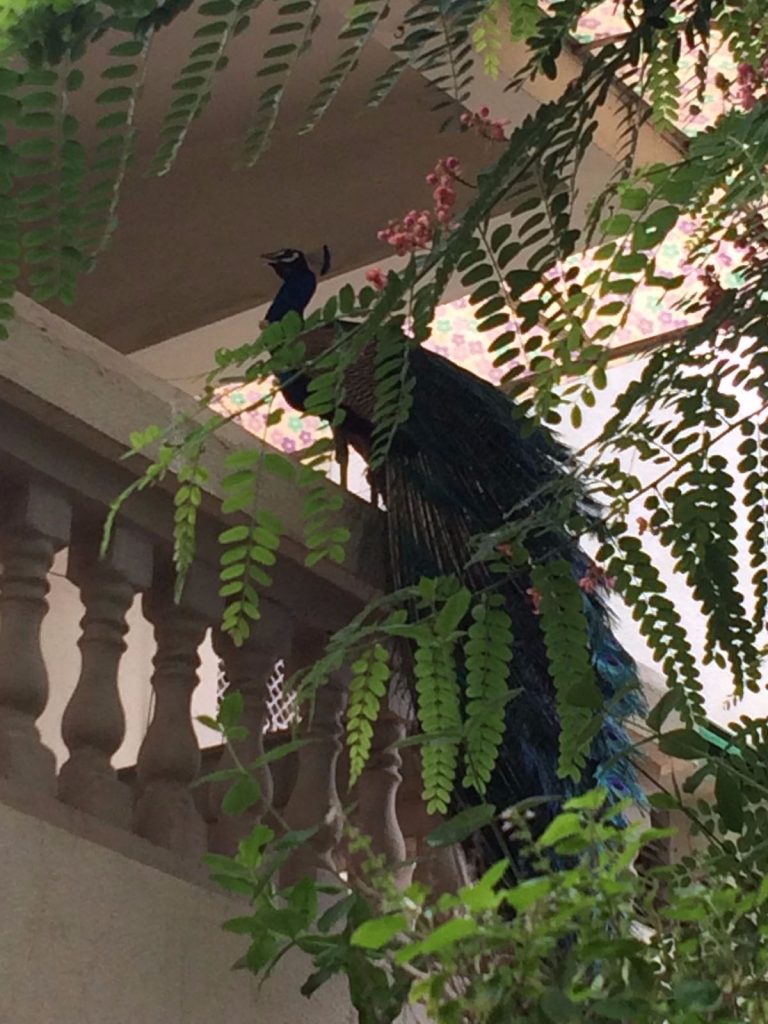
I’m from a pretty small town. It’s usually a quiet little place – so quiet that I can hear our neighbor’s cows lowing from inside my bedroom. After I came to Duke freshman year, the noises that I heard from my dorm room were a little different. Shouts of students on the quad were punctuated with the grumble of trains running across tracks close by campus in what grew to be a comfortingly consistent pattern and the not-so-comforting beeping of garbage trucks right below my window at 8 AM on Monday mornings. Living on a college campus is very different from the sleepy city in which I grew up, but I have come to love Duke and am now familiar with the background music of both my homes.
When I told my parents that I wanted to do DukeEngage in Ahmedabad, India, one of the first things they did was to look up the size of the city to try and visualize what exactly an urban area in one of the most highly populated countries in the world might look like. While coming to a city of over 7 million from a town with less than 4,000 people has been challenging in many ways, some of which I was prepared for, some of which I was not, one thing that I didn’t think to prepare myself for is the variation in the soundtrack of life here.
As one would expect, Ahmedabad is a bit noisier than my hometown. Instead of hearing cows or trains from my bedroom, I listen to the constant whirring of my ceiling fan, the honking of cars on the street outside, and the aggressive chirping of pigeons fighting for space on the ledge outside my window. I can hear doors opening and closing as my host family moves about the apartment and the excited shouts of my 7-year-old host brother as he runs around and plays games, and the clatter of silverware spills out from the kitchen while our next meal is being prepared.
On the way to work every day, I hear a symphony of car horns, faint snippets of Bollywood music from other vehicles, and the mooing of cows right beside our taxi on the street instead of from my bedroom at home.
At SAATH, I, along with two other interns, have been working with the Child-Friendly Spaces project to develop and test interactive learning activities that CFS can use at its sites across the city. When we get to go test out activities at sites, we hear the gleeful yells of students as they perform their favorite song, “Rolly Poly,” for us and the rustle of some creative and nifty cradles as the youngest children are rocked to sleep.
When we work from the office, I am surrounded with the rhythmic tapping of my fellow DukeEngage students on their keyboards, hard at work on their projects. I expected this noise, and it provides a sense of comfort as it reminds me of group study sessions back at school. As we have become more integrated with the office, we have also gotten to work in harmony with the rest of SAATH’s staff. Hearing their sweet “Kaise ho?”s (“How are you?”s) as they give us opportunities to practice our Hindi as we pass in the kitchen always brightens my day.
These recurrent echoes and workplace conversations are to be expected when working in an office, but just as life in a city is different from life in a small town, offices in India are a bit different from offices in the United States.
I didn’t expect the clinking of tiffins (lunchboxes) and the clatter of metal container lids as all the employees share their lunches, family-style.
I didn’t expect the crunching of samosas on days when SAATH orders treats for everyone because the monsoon season has hit hard that day.
I definitely did not anticipate a beautifully dissonant cacophony of voices as everyone shook my hand to wish me many happy returns on my birthday last week, including the founder of SAATH and its current Executive Director who both took time out of their days to come celebrate and munch on the cookie bars my DukeEngage group surprised me with.
Some of the sounds that I will miss most of all are the gentle jingling of ceramic cups as our friend Santosh brings around cups of chai for everyone each morning and afternoon, the winsome cries of peacocks cutting sharply through the air, and the pure joy emanating from my peers each time our ears detect one of these frequencies. Peacocks are India’s national bird, and we have sort of adopted them as our mascot. Each time we hear one’s song, we all immediately stop and look for its owner, and it is this intense collective weeks-long birdwatch that I will remember most fondly of all.
While some noises are more welcome than others (the relentless rivets of rain can stop at any time now, thanks), they have all woven together to create a true masterpiece of a score to one of the greatest adventures of my life. We are nearing the conclusion of the piece, and I’m hoping that the finale of the work is just as exciting as its beginning before all too soon, the noises shift once again to the wheels of suitcases and planes as we journey back home. I’m so blessed and grateful to have heard this melody, and I am excited that for SAATH, the end of the summer is simply a refrain, not a coda, and the echoes of the work they are doing will resonate on for years to come.
